Utilisateur:Quisest/Brouillon

Le clergé catholique, à travers l'Histoire, a notoirement contribué au développement de la science[1]. Parmi ces scientifiques religieux, on trouve : Nicolas Copernic, Gregor Mendel, Georges Lemaître, Albert le Grand, Roger Bacon, Pierre Gassendi, Roger Joseph Boscovich, Marin Mersenne, Bernard Bolzano, Francesco Maria Grimaldi, Nicole Oresme, Jean Buridan, Robert Grosseteste,Christophorus Clavius, Niels Stensen, Athanasius Kircher, Giovanni Battista Riccioli, Guillaume d'Occam, et bien d'autres listés ci-dessous. L’Église catholique inclut aussi beaucoup de scientifiques et de mathématiciens laïcs.
Les Jésuites, en particulier, ont apporté beaucoup de contributions significatives à la science. Par exemple, les Jésuites ont fait avancer la recherche sur les tremblements de terre, si bien qu'on a parlé de la séismologie comme étant "une science jésuite" [2][3].
La Compagnie de Jésus fut décrite comme étant " à elle toute seule, l'un des plus importants contributeurs de la physique expérimentale au XVIIe siècle"[4]. Selon Jonathan Wright dans son livre God's Soldiers, avant la fin du XVIIIe siècle, les Jésuites avaient "contribué au développement de l'horloge pendulaire, du pantographe, du baromètre, du télescope et du microscope réflecteurs, et à des domaines scientifiques aussi divers que le magnétisme, l'optique et l’électricité. Ils observèrent, parfois avant tous les autres, les bandes colorées à la surface de Jupiter, la nébuleuse d'Andromède et les anneaux de Saturne. Ils théorisèrent la circulation du sang (indépendamment de Harvey), la possibilité théorique de voler, la manière dont la lune provoque les marées et la nature ondulatoire de la lumière"[5].
Les scientifiques célèbres, membres du Clergé catholique[modifier | modifier le code]
A[modifier | modifier le code]
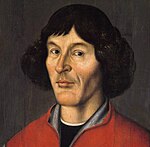

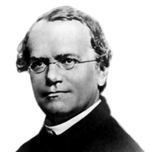



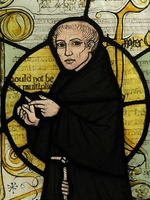
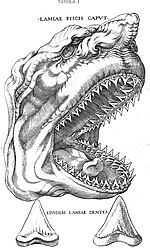


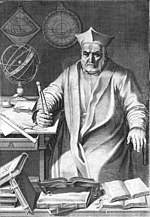


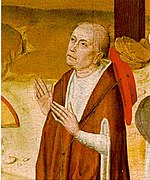





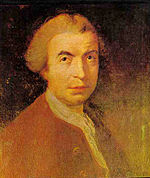
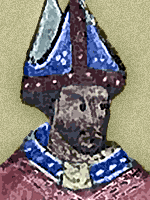
- José de Acosta (1539–1600) – missionnaire jésuite et naturaliste qui écrivit l'une des premières descriptions détaillées et réalistes du Nouveau Monde.
- François d'Aguilon (1567–1617) – mathématicien jésuite belge, physicien et architecte.
- Lorenzo Albacete (1941–2014) prêtre physicien et théologien.
- Albert de Saxe (philosophe) (c. 1320–1390) – évêque allemand connu pour sa contribution à la logique et à la physique ; avec Buridan, il contribua au développement de l'ancêtre de la théorie moderne de l'inertie[6].
- Albert le Grand (c. 1206–1280) – moine dominicain et évêque de Regensberg, il fut décrit comme étant "l'un des plus célèbres précurseurs de la science moderne au cours du Haut Moyen Âge"[7]. Saint Patron des sciences naturelles, il travailla dans les domaines de la physique, de la logique, de la métaphysique, de la biologie et de la psychologie.
- Giulio Alenio (1582-1649) - théologien jésuite, astronome et mathématicien. Il fut envoyé en Extrême Orient en tant que missionnaire et adopta un nom chinois et les coutumes locales. Il écrivit 25 livres, dont une cosmographie et une Vie de Jésus en chinois.
- José María Algué (1856–1930) – prêtre et météorologue, il inventa le barocyclomètre.
- José Antonio de Alzate y Ramírez (1737–1799) – prêtre, scientifique, historien, cartographe et météorologue qui écrivit plus de trente traités sur divers sujets scientifiques.
- Francesco Castracane degli Antelminelli (1817–1899) – prêtre et botaniste qui fut l'un des premiers à introduire la microphotographie dans ses études de biologie.
- Giovanni Antonelli (1818–1872) – prêtre et directeur du Ximenian Observatory de Florence, il collabora aussi à la conception du prototype du moteur à combustion interne.
- Nicolò Arrighetti (1709–1767) – jésuite qui écrivit des traités sur la lumière, la chaleur et l'électricité.
- Giuseppe Asclepi (1706–1776) – jésuite astronome et physicien qui servit en tant que directeur de l'observatoire du Collegio Romano ; le cratère lunaire Asclepi fut nommé tel en son honneur.
B[modifier | modifier le code]
- Roger Bacon (c. 1214–1294) – moine franciscain, surnommé Doctor mirabilis en raison de sa science prodigieuse, contribua considérablement au développement de l'optique et des mathématiques et est décrit comme un des précurseurs de la méthode scientifique moderne.
- Bernardino Baldi (1533–1617) – abbé, mathématicien et écrivain.
- Eugenio Barsanti (1821–1864) – frère des écoles pies, il est vraisemblablement l'inventeur du moteur à combustion interne.
- Bartholomeus Amicus (1562–1649) – jésuite qui écrivit sur la philosophie, les mathématiques, l'astronomie, le concept de vide et sur la relation à Dieu.
- Daniello Bartoli (1608–1685) – Bartoli et son ami l'astronome jésuite Niccolò Zucchi sont crédités d'avoir été les premiers à avoir observé les anneaux équatoriens de Jupiter.
- Joseph Bayma (1816–1892) – jésuite connu pour ses travaux en stéréochimie et mathématiques.
- Giacopo Belgrado (1704–1789) – professeur jésuite de mathématiques et de physique et mathématicien à la Cour qui réalisa des expérimentations en physique.
- Mario Bettinus (1582–1657) – philosophe jésuite, mathématicien et astronome ; le cratère lunaire Bettinus fut nommé tel en son honneur.
- Giuseppe Biancani (1566–1624) – astronome jésuite, mathématicien et sélénographe ; le cratère lunaire Blancanus fut nommé tel en son honneur.
- Jacques de Billy (1602–1679) – jésuite dont les résultats en théorie des nombres portent désormais son nom. Le cratère lunaire Billy fut nommé tel en son honneur.
- Paolo Boccone (1633–1704) – botaniste cistercien dont les contributions en médecine et toxicologie furent majeures.
- Bernard Bolzano (1781–1848) – prêtre, mathématicien et logicien dont les centres d'intérêt incluaient notamment la métaphysique, les idées, les sensations et la vérité.
- Anselmus de Boodt (1550–1632) – chanoine qui fut l'un des fondateurs de la minéralogie.
- Theodoric Borgognoni (1205–1298) – moine dominicain, évêque de Cervia et chirurgien du Moyen Âge qui contribua de façon importante à la pratique antiseptique et anesthésique.
- Christopher Borrus (1583–1632) – mathématicien jésuite et astronome qui réalisa des observations sur la variation magnétique du compas.
- Roger Joseph Boscovich (1711–1787) – esprit universel jésuite connu pour ses contribution à la théorie atomique moderne et à l'astronomie.
- Joachim Bouvet (1656–1730) – sinologue jésuite et cartographe qui travailla en Chine.
- Michał Boym (c. 1612–1659) – jésuite qui fut l'un des premiers à voyager au cœur de la Chine. Il est l'auteur de nombreux ouvrages sur la faune, la flore et la géographie asiatique.
- Thomas Bradwardine (c. 1290–1349) – archevêque de Canterbury et mathématicien qui contribua au théorème de la vitesse moyenne. Il est l'un des "Calculateurs d'Oxford".
- Martin Stanislaus Brennan (1845-1927) - prêtre et astronome qui écrivit plusieurs livres sur la science.
- Henri Breuil (1877–1961) – prêtre, archéologue, anthropologue, ethnologue et géologue. Il fut surnommé le « pape de la Préhistoire » et s’est illustré par ses contributions à la classification des industries paléolithiques et à l’étude de l’art pariétal préhistorique.
- Jan Brożek (1585–1652) – chanoine polonais, esprit universel, mathématicien, astronome et physicien. Il est l'un des plus éminents mathématiciens polonais du XVIIe siècle.
- Louis-Ovide Brunet (1826–1876) – prêtre qui est l'un des pères fondateurs de la botanique canadienne.
- Francesco Faà di Bruno (c. 1825–1888) – prêtre et mathématicien ; béatifié par le pape Jean-Paul II.
- Ismaël Bullialdus (1605–1694) – prêtre, astronome et membre de la Royal Society ; le cratère lunaire Bullialdus fut nommé tel en son honneur.
- Jean Buridan (c. 1300 – après 1358) – prêtre qui formula les premières idées sur la quantité de mouvement et le moment d'inertie et qui sema les premières graines de la révolution copernicienne en Europe.
- Roberto Busa (1913-2011) - jésuite qui opéra une lemmatisation de l’œuvre complète de St Thomas d'Aquin (Index Thomisticus), qui fut plus tard numérisée par IBM.
C[modifier | modifier le code]
- Niccolò Cabeo (1586–1650) – mathématicien jésuite ; le cratère lunaire Cabeus fut nommé tel en son honneur.
- Nicholas Callan (1799–1846) – prêtre et scientifique irlandais, connu pour ses travaux relatifs à la bobine d'induction.
- Jean-Baptiste Carnoy (1836–1899) – prêtre, fondateur de la cytologie.
- Giovanni di Casali (décédé c. 1375) – moine franciscain qui produisit une analyse graphique du mouvement des corps en accélération.
- Paolo Casati (1617–1707) – mathématicien jésuite qui écrivit sur l'astronomie et le vide ; le cratère lunaire Casatus fut nommé tel en son honneur.
- Laurent Cassegrain (1629–1693) – prêtre qui mit au point le dispositif optique de type catadioptrique qui porte aujourd'hui son nom : le télescope Schmidt-Cassegrain ; le cratère lunaire Cassegrain fut nommé tel en son honneur.
- Benedetto Castelli (1578–1643) – mathématicien bénédictin, ami de longue date et soutien de Galileo Galilei, dont il fut le professeur. Ils produisit d'importants travaux sur la mécanique des fluides.
- Bonaventura Cavalieri (1598–1647) – jésuite connu pour ses travaux en optique et mécanique, il introduisit les logarithmes en Italie et travailla sur les prémices du calcul infinitésimal. Il est surtout connu pour le "Principe de Cavalieri", qui établit que les volumes de deux objets sont égaux si les secteurs des sections transversales correspondantes sont, dans tous les cas, égaux, et qui anticipe partiellement le calcul intégral. Le cratère lunaire Cavalerius fut nommé tel en son honneur.
- Antonio José Cavanilles (1745–1804) – prêtre et chef de file espagnol de la botanique taxinomique espagnole du XVIIIe siècle.
- Francesco Cetti (1726–1778) – zoologue jésuite et mathématicien.
- Tommaso Ceva (1648–1737) – jésuite mathématicien et professeur qui rédigea des traités sur la géométrie, la gravité et l'arithmétique.
- Christophorus Clavius (1538–1612) – astronome jésuite honoré et mathématicien qui dirigea la commission qui élabora le calendirer grégorien. Il rédigea des ouvrages majeurs en astronomie.
- Guy Consolmagno (1952– ) – astronome jésuite connu pour ses études sur les planètes.
- Nicolas Copernic (1473–1543) – astronome de la Renaissance et chanoine, célèbre pour sa cosmologie héliocentrique qui enclencha la Révolution copernicienne.
- Vincenzo Coronelli (1650–1718) – cosmographe franciscain, cartographe, encyclopédiste et faiseur de globes.
- George Coyne (1933– ) – astronome jésuite et ancien directeur de l'Observatoire du Vatican.
- James Cullen (mathématicien) (1867–1933) – mathématicien jésuite qui publia ce qui est maintenant connu comme étant les "nombres de Cullen" en théorie des nombres.
- James Curley (astronome) (1796–1889) – jésuite qui fut le premier directeur du Georgetown Observatory et qui détermina la longitude et la latitude de Washington D.C.
- Albert Curtz (1600–1671) – astronome jésuite qui détailla les travaux de Tycho Brahe et contribua très tôt à la compréhension de la mécanique lunaire. Le cratère lunaire Curtius est nommé tel en son honneur.
- Jean-Baptiste Cysat (1587–1657) – mathématicien et astronome jésuite. Il publia le premier livre imprimé européen sur le Japon et fut l'un des tout premiers à utiliser le télescope nouvellement inventé. Ses travaux principaux portent sur les comètes. Le cratère lunaire Cysatus fut nommé tel en son honneur.
- Jean Chappe d'Auteroche (1722–1769) – prêtre et astronome, principalement connu pour ses observations des cycles de Vénus.
D[modifier | modifier le code]
- Ignazio Danti (1536–1586) – mathématicien dominicain, astronome, cosmographe et cartographe.
- Armand David (1826–1900) – prêtre lazariste, zoologue et botaniste qui effectua un travail important en ces domaines en Chine.
- Francesco Denza (1834–1894) – météorologue barnabite, astronome et directeur de l'Observatoire du Vatican.
- Procopius Divisch (1698–1765) – prêtre tchèque qui étudia le paratonnerre indépendamment de Franklin et construisit le premier instrument musical électrifié de l'Histoire.
- Alberto Dou (1915-2009) – prêtre jésuite espagnol qui fut président de la Société Royale de Mathématiques, membre de l'Académie Royale des Sciences naturelles, physiques et exactes, et l'un des plus proéminents mathématiciens de son pays.
- Johann Dzierzon (1811–1906) – prêtre et apiculteur pionnier qui découvrit le phénomène de parthénogenèse parmi les abeilles et conçut la première ruche à cadres mobiles réussie. Il est décrit comme le "père de l'apiculture moderne".
F[modifier | modifier le code]
- Francesco Faà di Bruno (c. 1825–1888) – prêtre et mathématicien béatifié par le pape Jean-Paul II.
- Honoré Fabri (1607–1688) – mathématicien et physicien jésuite.
- Jean-Charles della Faille (1597–1652) – mathématicien jésuite qui détermina, pour la première fois dans l'Histoire, le centre de gravité d'un secteur circulaire.
- Gabriele Falloppio (1523–1562) – Canon and one of the most important anatomists and physicians of the sixteenth century. The Fallopian tubes, which extend from the uterus to the ovaries, are named for him.
- Gyula Fényi (1845–1927) – Jesuit astronomer and director of the Haynald Observatory; noted for his observations of the sun; The crater Fényi on the Moon is named after him
- Louis Feuillée (1660–1732) – Minim explorer, astronomer, geographer, and botanist
- Placidus Fixlmillner (1721–1791) – Benedictine priest and one of the first astronomers to compute the orbit of Uranus
- Paolo Frisi (1728–1784) – Priest, mathematician, and astronomer who did significant work in hydraulics
- José Gabriel Funes (1963– ) – Jesuit astronomer and current director of the Vatican Observatory
G[modifier | modifier le code]
- Joseph Galien (1699 – c. 1762) – Dominican professor who wrote on aeronautics, hailstorms, and airships
- Jean Gallois (1632–1707) – French scholar, abbot, and member of Academie des sciences
- Pierre Gassendi (1592–1655) – French priest, astronomer, and mathematician who published the first data on the transit of Mercury; best known intellectual project attempted to reconcile Epicurean atomism with Christianity
- Agostino Gemelli (1878–1959) – Franciscan physician and psychologist; founded Catholic University of the Sacred Heart in Milan
- Johannes von Gmunden (c. 1380–1442) – Canon, mathematician, and astronomer who compiled astronomical tables; Asteroid 15955 Johannesgmunden named in his honor
- Carlos de Sigüenza y Góngora (1645–1700) – Priest, polymath, mathematician, astronomer, and cartographer; drew the first map of all of New Spain
- Andrew Gordon (bénédictin) (1712–1751) – Benedictine monk, physicist, and inventor who made the first electric motor
- Christopher Grienberger (1561–1636) – Jesuit astronomer after whom the crater Gruemberger on the Moon is named; verified Galileo's discovery of Jupiter's moons.
- Francesco Maria Grimaldi (1618–1663) – Jesuit who discovered the diffraction of light (indeed coined the term "diffraction"), investigated the free fall of objects, and built and used instruments to measure geological features on the moon
- Robert Grosseteste (c. 1175 – 1253) – Bishop who was one of the most knowledgeable men of the Middle Ages; has been called "the first man ever to write down a complete set of steps for performing a scientific experiment."[8]
- Paul Guldin (1577–1643) – Jesuit mathematician and astronomer who discovered the Guldinus theorem to determine the surface and the volume of a solid of revolution
- Bartolomeu de Gusmão (1685–1724) – Jesuit known for his early work on lighter-than-air airship design
H[modifier | modifier le code]
- Johann Georg Hagen (1847–1930) – Jesuit director of the Georgetown and Vatican Observatories; The crater Hagen on the Moon is named after him
- Nicolas Halma (1755–1828) – French abbot, mathematician, and translator
- Jean-Baptiste du Hamel (1624–1706) – French priest, natural philosopher, and secretary of the Academie Royale des Sciences
- René Just Haüy (1743–1822) – Priest known as the father of crystallography
- Maximilian Hell (1720–1792) – Jesuit astronomer and director of the Vienna Observatory; the crater Hell on the Moon is named after him.
- Michał Heller (1936– ) – Polish priest, Templeton Prize winner, and prolific writer on numerous scientific topics
- Lorenz Hengler (1806–1858) – Priest often credited as the inventor of the horizontal pendulum
- Hermann of Reichenau (1013–1054) – Benedictine historian, music theorist, astronomer, and mathematician
- Pierre Marie Heude (1836–1902) – Jesuit missionary and zoologist who studied the natural history of Eastern Asia
- Franz von Paula Hladnik (1773–1844) – Priest and botanist who discovered several new kinds of plants, and certain genera have been named after him
- Giovanni Battista Hodierna (1597–1660) – Priest and astronomer who catalogued nebulous objects and developed an early microscope
- Victor-Alphonse Huard (1853–1929) – Priest, naturalist, educator, writer, and promoter of the natural sciences
I[modifier | modifier le code]
- Maximus von Imhof (1758–1817) – German Augustinian physicist and director of the Munich Academy of Sciences
- Giovanni Inghirami (1779–1851) – Italian Piarist astronomer who has a valley on the moon named after him as well as a crater
J[modifier | modifier le code]
- François Jacquier (1711–1788) – Franciscan mathematician and physicist; at his death he was connected with nearly all the great scientific and literary societies of Europe
- Stanley Jaki (1924–2009) – Benedictine priest and prolific writer who wrote on the relationship between science and theology
- Ányos Jedlik (1800–1895) – Benedictine engineer, physicist, and inventor; considered by Hungarians and Slovaks to be the unsung father of the dynamo and electric motor
K[modifier | modifier le code]
- Georg Joseph Kamel (1661–1706) – Jesuit missionary and botanist who established the first pharmacy in the Philippines
- Karl Kehrle (1898-1996) - Benedictine Monk of Buckfast Abbey, England. Beekeeper. World authority on bee breeding, developer of the Buckfast bee.
- Eusebio Kino (1645-1711) - Jesuit missionary, mathematician, astronomer and cartographer who drew maps based on his explorations first showing that California was not an island as then believed and who published an astronomical treatise in Mexico City of his observations of the Kirsch comet.
- Otto Kippes (1905–1994) – Priest acknowledged for his work in asteroid orbit calculations; the main belt asteroid 1780 Kippes was named in his honour
- Athanasius Kircher (1602–1680) – Jesuit who has been called the father of Egyptology and "Master of a hundred arts"; wrote an encyclopedia of China; one of the first people to observe microbes through a microscope
- Wenceslas Pantaleon Kirwitzer (1588–1626) – Jesuit astronomer and missionary who published observations of comets
- Jan Krzysztof Kluk (1739–1796) – Priest, naturalist agronomist, and entomologist who wrote a multi-volume work on Polish animal life
- Marian Wolfgang Koller (1792–1866) – Benedictine professor who wrote on astronomy, physics, and meteorology
- Franz Xaver Kugler (1862–1929) – Jesuit chemist, mathematician, and Assyriologist who is most noted for his studies of cuneiform tablets and Babylonian astronomy
L[modifier | modifier le code]
- Ramon Llull (ca. 1232 – ca. 1315) Majorcan writer and philosopher, logician and a Franciscan tertiary considered a pioneer of computation theory
- Nicolas Louis de Lacaille (1713-1762) - French deacon and astronomer noted for cataloguing stars, nebulous objects, and constellations
- Eugene Lafont (1837–1908) – Jesuit physicist, astronomer, and founder of the first Scientific Society in India
- Antoine de Laloubère (1600–1664) – Jesuit and first mathematician to study the properties of the helix
- Bernard Lamy (1640–1715) – Oratorian philosopher and mathematician who wrote on the parallelogram of forces
- Pierre André Latreille (1762–1833) – Priest and entomologist whose works describing insects assigned many of the insect taxa still in use today
- Georges Lemaître (1894–1966) – Belgian priest and father of the Big Bang Theory
- Thomas Linacre (c. 1460–1524) – English priest, humanist, translator, and physician
- Francis Line (1595–1675) – Jesuit magnetic clock and sundial maker who disagreed with some of the findings of Newton and Boyle
- Juan Caramuel y Lobkowitz (1606–1682) – Cistercian who wrote on a variety of scientific subjects, including probability theory
M[modifier | modifier le code]
- Jean Mabillon (1632–1707) – Benedictine monk and scholar, considered the founder of palaeography and diplomatics
- James B. Macelwane (1883–1956) – "The best-known Jesuit seismologist" and "one of the most honored practicioners of the science of all time"; wrote the first textbook on seismology in America.
- John MacEnery (1797-1841) - Archaeologist who investigated the Palaeolithic remains at Kents Cavern
- Paul McNally (1890–1955) – Jesuit astronomer and director of Georgetown Observatory; the crater McNally on the Moon is named after him.
- Manuel Magri (1851–1907) – Jesuit ethnographer, archaeologist and writer; one of Malta's pioneers in archaeology
- Emmanuel Maignan (1601–1676) – Minim physicist and professor of medicine who published works on gnomonics and perspective
- Charles Malapert (1581–1630) – Jesuit writer, astronomer, and proponent of Aristotelian cosmology; also known for observations of sunpots and of the lunar surface, and the crater Malapert on the Moon is named after him
- Nicolas Malebranche (1638–1715) – Oratorian philosopher who studied physics, optics, and the laws of motion and disseminated the ideas of Descartes and Leibniz
- Marcin of Urzędów (c. 1500–1573) – Priest, physician, pharmacist, and botanist
- Joseph Maréchal (1878–1944) – Jesuit philosopher and psychologist
- Marie-Victorin (1885–1944) – Christian Brother and botanist best known as the father of the Jardin botanique de Montréal
- Edme Mariotte (c. 1620–1684) – Priest and physicist who recognized Boyle's Law and wrote about the nature of color
- Francesco Maurolico (1494–1575) – Benedictine who made contributions to the fields of geometry, optics, conics, mechanics, music, and astronomy, and gave the first known proof by mathematical induction
- Christian Mayer (astronome) (1719–1783) – Jesuit astronomer most noted for pioneering the study of binary stars
- James Robert McConnell (1915-1999) - Irish Theoretical Physicist, Pontifical Academician, Monsignor
- Gregor Mendel (1822–1884) – Augustinian monk and father of genetics
- Pietro Mengoli (1626–1686) – Priest and mathematician who first posed the famous Basel Problem
- Giuseppe Mercalli (1850–1914) – Priest, volcanologist, and director of the Vesuvius Observatory who is best remembered today for his Mercalli scale for measuring earthquakes which is still in use
- Marin Mersenne (1588–1648) – Minim philosopher, mathematician, and music theorist who is often referred to as the "father of acoustics"
- Paul of Middelburg (1446–1534) – Bishop of Fossombrone who wrote important works on the reform of the calendar
- Maciej Miechowita (1457–1523) – Canon who wrote the first accurate geographical and ethnographical description of Eastern Europe, as well as two medical treatises
- François Napoléon Marie Moigno (1804–1884) – Jesuit physicist and mathematician; was an expositor of science and translator rather than an original investigator
- Juan Ignacio Molina (1740–1829) – Jesuit naturalist, historian, botanist, ornithologist and geographer
- Louis Moréri (1643–1680) – 17th century priest and encyclopaedist
- Théodore Moretus (1602–1667) – Jesuit mathematician and author of the first mathematical dissertations ever defended in Prague; the lunar crater Moretus is named after him.
- Landell de Moura (1861–1928) – Priest and inventor who was the first to accomplish the transmission of the human voice by a wireless machine
- Gabriel Mouton (1618–1694) – Abbot, mathematician, astronomer, and early proponent of the metric system
- Jozef Murgaš (1864–1929) – Priest who contributed to wireless telegraphy and help develop mobile communications and wireless transmission of information and human voice
- José Celestino Mutis (1732–1808) – Canon, botanist, and mathematician who led the Royal Botanical Expedition of the New World
N[modifier | modifier le code]
- Jean-François Niceron (1613–1646) – Minim mathematician who studied geometrical optics
- Nicolas de Cuse (1401–1464) – Cardinal, philosopher, jurist, mathematician, astronomer, and one of the great geniuses and polymaths of the 15th century
- Julius A. Nieuwland (1878–1936) – Holy Cross priest, known for his contributions to acetylene research and its use as the basis for one type of synthetic rubber, which eventually led to the invention of neoprene by DuPont
- Jean-Antoine Nollet (1700–1770) – Abbot and physicist who discovered the phenomenon of osmosis in natural membranes.
O[modifier | modifier le code]
- Hugo Obermaier (1877–1946) – Priest, prehistorian, and anthropologist who is known for his work on the diffusion of mankind in Europe during the Ice Age, as well as his work with north Spanish cave art
- Guillaume d'Occam (c. 1288 – c. 1348) – Franciscan Scholastic who wrote significant works on logic, physics, and theology; known for Ockham's Razor
- Nicole Oresme (c. 1323–1382) – One of the most famous and influential philosophers of the later Middle Ages; economist, mathematician, physicist, astronomer, philosopher, theologian and Bishop of Lisieux, and competent translator; one of the most original thinkers of the 14th century
- Barnaba Oriani (1752–1832) – Barnabite geodesist, astronomer and scientist whose greatest achievement was his detailed research of the planet Uranus, and is also known for Oriani's theorem
P[modifier | modifier le code]
- Luca Pacioli (c. 1446–1517) – Franciscan friar who published several works on mathematics and is often regarded as the Father of Accounting
- Ignace-Gaston Pardies (1636–1673) – Jesuit physicist known for his correspondence with Newton and Descartes
- Franciscus Patricius (1529–1597) – Priest, cosmic theorist, philosopher, and Renaissance scholar
- John Peckham (1230–1292) – Archbishop of Canterbury and early practitioner of experimental science
- Nicolas Claude Fabri de Peiresc (1580–1637) – Abbot and astromer who discovered the Orion Nebula; lunar crater Peirescius named in his honor
- Stephen Joseph Perry (1833–1889) – Jesuit astronomer and Fellow of the Royal Society; made frequent observations of Jupiter's satellites, of stellar occultations, of comets, of meteorites, of sun spots, and faculae
- Giambattista Pianciani (1784–1862) – Jesuit mathematician and physicist
- Giuseppe Piazzi (1746–1826) – Theatine mathematician and astronomer who discovered Ceres, today known as the largest member of the asteroid belt; also did important work cataloguing stars
- [Picard|Jean Picard ](1620–1682) – Priest and first person to measure the size of the Earth to a reasonable degree of accuracy; also developed what became the standard method for measuring the right ascension of a celestial object; The PICARD mission, an orbiting solar observatory, is named in his honor
- Edward Pigot (1858–1929) – Jesuit seismologist and astronomer
- Alexandre Guy Pingré (1711–1796) – French priest astronomer and naval geographer; the crater Pingré on the Moon is named after him, as is the asteroid 12719 Pingré
- Andrew Pinsent (1966- ) – Priest whose current research includes the application of insights from autism and social cognition to 'second-person' accounts of moral perception and character formation. His previous scientific research contributed to the DELPHI experiment at CERN
- Jean Baptiste François Pitra (1812–1889) – Bendedictine cardinal, archaeologist and theologian who noteworthy for his great archaeological discoveries
- Charles Plumier (1646–1704) – Minim friar who is considered one of the most important botanical explorers of his time
- Marcin Odlanicki Poczobutt (1728–1810) – Jesuit astronomer and mathematician; granted the title of the King's Astronomer; the crater Poczobutt on the Moon is named after him.
- Léon Abel Provancher (1820–1892) – Priest and naturalist devoted to the study and description of the fauna and flora of Canada; his pioneer work won for him the appellation of the "Father of Natural History in Canada"
R[modifier | modifier le code]
- Louis Receveur (1757–1788) – Franciscan naturalist and astronomer; described as being as close as one could get to being an ecologist in the 18th century
- Franz Reinzer (1661–1708) – Jesuit who wrote an in-depth meteorological, astrological, and political compendium covering topics such as comets, meteors, lightning, winds, fossils, metals, bodies of water, and subterranean treasures and secrets of the earth
- Louis Rendu (1789–1859) – Bishop who wrote an important book on the mechanisms of glacial motion; the Rendu Glacier, Alaska, U.S. and Mount Rendu, Antarctica are named for him
- Vincenzo Riccati (1707–1775) – Italian Jesuit mathematician and physicist
- Matteo Ricci (1552–1610) – One of the founding fathers of the Jesuit China Mission and co-author of the first European-Chinese dictionary
- Giovanni Battista Riccioli (1598–1671) – Jesuit astronomer who authored Almagestum novum, an influential encyclopedia of astronomy; The first person to measure the rate of acceleration of a freely falling body; created a selenograph with Father Grimaldi that now adorns the entrance at the National Air and Space Museum in Washington D.C.
- Richard of Wallingford (1292-1336) - Abbot, renowned clockmaker, and one of the initiators of western trigonometry
- Johannes Ruysch (c. 1460–1533) – Priest, explorer, cartographer, and astronomer who created the second oldest known printed representation of the New World
S[modifier | modifier le code]
- Giovanni Girolamo Saccheri (1667–1733) – Jesuit mathematician and geometer
- Johannes de Sacrobosco (c. 1195 – c. 1256) – Irish monk and astronomer who wrote the authoritative medieval astronomy text Tractatus de Sphaera; his Algorismus was the first text to introduce Hindu-Arabic numerals and procedures into the European university curriculum; the lunar crater Sacrobosco is named after him
- Grégoire de Saint-Vincent (1584–1667) – Jesuit mathematician who made important contributions to the study of the hyperbola
- Alphonse Antonio de Sarasa (1618–1667) – Jesuit mathematician who contributed to the understanding of logarithms
- Christoph Scheiner (c. 1573–1650) – Jesuit physicist, astronomer, and inventor of the pantograph; wrote on a wide range of scientific subjects
- Wilhelm Schmidt (anthropologue) (1868–1954) – Austrian priest, linguist, anthropologist, and ethnologist.
- George Schoener (1864–1941) – Priest who became known in the United States as the "Padre of the Roses" for his experiments in rose breeding
- Gaspar Schott (1608–1666) – Jesuit physicist, astronomer, and natural philosopher who is most widely known for his works on hydraulic and mechanical instruments
- Franz Paula von Schrank (1747–1835) – Priest, botanist, entomologist, and prolific writer
- Berthold Schwarz (c. 14th century) – Franciscan friar and reputed inventor of gunpowder and firearms
- Anton Maria Schyrleus of Rheita (1604–1660) – Capuchin astronomer and optrician who built Kepler's telescope
- George Mary Searle (1839–1918) – Paulist astronomer and professor who discovered six galaxies
- Angelo Secchi (1818–1878) – Jesuit pioneer in astronomical spectroscopy, and one of the first scientists to state authoritatively that the sun is a star
- Alessandro Serpieri (1823–1885) – Priest, astronomer, and seismologist who studied shooting stars, and was the first to introduce the concept of the seismic radiant
- Gerolamo Sersale (1584–1654) – Jesuit astronomer and selenographer; his map of the moon can be seen in the Naval Observatory of San Fernando; the lunar crater Sirsalis is named after him
- Benedict Sestini (1816–1890) – Jesuit astronomer, mathematician and architect; studied sunspots and eclipses; wrote textbooks on a variety of mathematical subjects
- René François Walter de Sluse (1622–1685) – Canon and mathematician with a family of curves named after him
- Lazzaro Spallanzani (1729–1799) – Priest, biologist, and physiologist who made important contributions to the experimental study of bodily functions, animal reproduction, and essentially discovered echolocation; his research of biogenesis paved the way for the investigations of Louis Pasteur
- Valentin Stansel (1621–1705) – Jesuit astronomer who made important observations of comets
- Johan Stein (1871–1951) – Jesuit astronomer and director of the Vatican Observatory, which he modernized and relocated to Castel Gandolfo; the crater Stein on the far side of the Moon is named after him
- Niels Stensen (1638–1686) – Bishop beatified by Pope John Paul II who is often called the father of geology[9] and stratigraphy,[7] and is known for Steno's principles
- Pope Sylvester II (c. 946–1003) – Prolific scholar who endorsed and promoted Arabic knowledge of arithmetic, mathematics, and astronomy in Europe, reintroducing the abacus and armillary sphere which had been lost to Europe since the end of the Greco-Roman era
- Alexius Sylvius Polonus (1593 – c. 1653) – Jesuit astronomer who studied sunspots and published a work on calendariography
- Ignacije Szentmartony (1718–1793) – Jesuit cartographer, mathematician, and astronomer who became a member of the expedition that worked on the rearrangement of the frontiers among colonies in South America
T[modifier | modifier le code]
- André Tacquet (1612–1660) – Jesuit mathematician whose work laid the groundwork for the eventual discovery of calculus
- Pierre Teilhard de Chardin (1881–1955) – Jesuit paleontologist and geologist who took part in the discovery of Peking Man
- Francesco Lana de Terzi (c. 1631–1687) – Jesuit referred to as the Father of Aviation[10] for his pioneering efforts; he also developed a blind writing alphabet prior to Braille.
- Theodoric of Freiberg (c. 1250 – c. 1310) – Dominican theologian and physicist who gave the first correct geometrical analysis of the rainbow
- Joseph Tiefenthaler (1710–1785) – Jesuit who was one of the earliest European geographers to write about India
- Giuseppe Toaldo (1719–1797) – Priest and physicist who studied atmospheric electricity and did important work with lightning rods; the asteroid 23685 Toaldo is named for him.
- José Torrubia (c. 1700–1768) – Franciscan linguist, scientist, collector of fossils and books, and writer on historical, political and religious subjects
- Franz de Paula Triesnecker (1745–1817) – Jesuit astronomer and director of the Vienna Observatory; published a number of treatises on astronomy and geography; the crater Triesnecker on the Moon is named after him.
V[modifier | modifier le code]
- Luca Valerio (1552–1618) – Jesuit mathematician who developed ways to find volumes and centers of gravity of solid bodies
- Pierre Varignon (1654–1722) – Priest and mathematician whose principle contributions were to statics and mechanics; created a mechanical explanation of gravitation
- Jacques Vaucanson (1709–1782) – French Minim friar inventor and artist who was responsible for the creation of impressive and innovative automata and machines such as the first completely automated loom.
- Giovanni Battista Venturi (1746–1822) – Priest who discovered the Venturi effect
- Fausto Veranzio (c. 1551–1617) – Bishop, polymath, inventor, and lexicographer
- Ferdinand Verbiest (1623–1688) – Jesuit astronomer and mathematician; designed what some claim to be the first ever self-propelled vehicle – many claim this as the world's first automobile
- Francesco de Vico (1805–1848) – Jesuit astronomer who discovered or co-discovered a number of comets; also made observations of Saturn and the gaps in its rings; the lunar crater De Vico and the asteroid 20103 de Vico are named after him
- Vincent de Beauvais (c.1190–c.1264) – Dominican who wrote the most influential encyclopedia of the Middle Ages
- Benito Viñes (1837–1893) – Jesuit meteorologist who made the first weather model to predict the trajectory of a hurricane.[11][12][13]
- Jean Vitéz (archevêque) (c.1405–1472) – Archbishop, astronomer, and mathematician
W[modifier | modifier le code]
- Martin Waldseemüller (c. 1470–1520) – German priest and cartographer who, along with Matthias Ringmann, is credited with the first recorded usage of the word America
- Godefroy Wendelin (1580–1667) – Priest and astronomer who recognized that Kepler's third law applied to the satellites of Jupiter; the lunar crate Vendelinus is named in his honor
- Johannes Werner (1468–1522) – Priest, mathematician, astronomer, and geographer
- Witelo (c. 1230 – after 1280, before 1314) – Friar, physicist, natural philosopher, and mathematician; lunar crater Vitello named in his honor; his Perspectiva powerfully influenced later scientists, in particular Johannes Kepler
- Julian Tenison Woods (1832–1889) – Passionist geologist and mineralogist
- Theodor Wulf (1868–1946) – Jesuit physicist who was one of the first experimenters to detect excess atmospheric radiation
- Franz Xaver von Wulfen (1728-1805) - Jesuit botanist, mineralogist, and alpinist
Z[modifier | modifier le code]
- John Zahm (1851–1921) – Holy Cross priest and South American explorer
- Giuseppe Zamboni (1776–1846) – Priest and physicist who invented the Zamboni pile, an early electric battery similar to the Voltaic pile
- Francesco Zantedeschi (1797–1873) – Priest who was among the first to recognize the marked absorption by the atmosphere of red, yellow, and green light; published papers on the production of electric currents in closed circuits by the approach and withdrawal of a magnet, thereby anticipating Michael Faraday's classical experiments of 1831[14]
- Niccolò Zucchi (1586–1670) – claimed to have tried to build a reflecting telescope in 1616 but abandoned the idea (maybe due to the poor quality of the mirror).[15] May have been the first to see the belts on the planet Jupiter (1630).[16]
- Giovanni Battista Zupi (c. 1590–1650) – Jesuit astronomer, mathematician, and first person to discover that the planet Mercury had orbital phases; the crater Zupus on the Moon is named after him.
Articles connexes[modifier | modifier le code]
Notes[modifier | modifier le code]
- Cette liste inclut des prêtres, des évêques (y compris des papes), des diacres, des moines, des abbés, et des frères mineurs.
- Susan Elizabeth Hough, Richter's Scale: Measure of an Earthquake, Measure of a Man, Princeton University Press, 2007, (ISBN 0691128073), p. 68.
- Woods 2005, p. 109.
- Lindberg et Numbers 1986, p. 154.
- Wright 2004, p. 200.
- http://www.newadvent.org/cathen/13504a.htm
- Woods 2005, p. 96.
- Woods 2005, p. 95.
- Woods 2005, p. 4.
- Woods 2005, p. 36.
- ca:Benet Viñes
- http://www.sciences360.com/index.php/the-legacy-of-fr-benito-vines-10199/
- http://www.miamiarch.org/ip.asp?op=Article_131017125417303&lg=E
- http://www.newadvent.org/cathen/15750b.htm
- The History of the Telescope by Henry C. King Page 44
- Gregerson, Erik, Astronomical Observations: Astronomy and the Study of Deep Space, Rosen Education Service, 2009, (ISBN 1615300252), [1]
- Citations
- (en) J. L. Heilbron, The Sun in the Church: Cathedrals as Solar Observatories, Cambridge, Harvard University Press,
- (en) God and Nature: Historical Essays on the Encounter Between Christianity and Science, Berkeley, University of California Press,
- (en) James J. Walsh, Catholic Churchmen in Science: Sketches of the Lives of Catholic Ecclesiastics Who Were among the Great Founders in Science, Kessinger, (ISBN 978-0-548-53218-8)
- (en) Thomas E. Woods, How the Catholic Church Built Western Civilization, Washington, DC, Regnery,
- (en) Jonathan Wright, God's Soldiers: Adventure, Politics, intrigue and Power: A History of the Jesuits, London, HarperCollins,
Bibliographie complémentaire[modifier | modifier le code]
- Barr, Stephen M. Modern Physics and Ancient Faith. Notre Dame, IN: University of Notre Dame, 2006.
- Broad, William J. "How the Church aided 'Heretical' Astronomy," New York Times, October 19, 1999.
- Feingold, Mordechai, ed. Jesuit Science and the Republic of Letters. Cambridge: MIT Press, 2002.
- Gilson, Etienne, Reason and Revelation in the Middle Ages. New York: Charles Scribner's Sons, 1970.
- Grant, Edward. The Foundations of Modern Science in the Middle Ages: Their Religious, Institutional, and Intellectual Contexts. Cambridge: Cambridge University Press, 1996.
- Grant, Edward. God and Reason in the Middle Ages. Cambridge: Cambridge University Press, 2001.
- Hannam, James. The Genesis of Science: How the Christian Middle Ages Launched the Scientific Revolution. Washington, DC: Regnery, 2011.
- Horn, Stephan Otto, ed. Creation and Evolution: A Conference with Pope Benedict XVI in Castel Gandolfo. San Francisco, CA: Ignatius, 2008.
- Jaki, Stanley. The Savior of Science. Grand Rapids: Eerdmans, 2000.
- Jaki, Stanley. Science and Creation: From Eternal Cycles to an Oscillating University. Edinburgh: Scottish Academic Press, 1986.
- Lindberg, David C. The Beginnings of Western Science. Chicago: University of Chicago Press, 1992.
- MacDonnell, Joseph E. Jesuit Geometers. St. Louis: Institute of Jesuit Sources, 1989.
- Schönborn, Christoph Cardinal. Chance or Purpose?: Creation, Evolution, and a Rational Faith. San Francisco: Ignatius, 2007.
- Spitzer, Robert J. New Proofs for the Existence of God: Contributions of Contemporary Physics and Philosophy. Grand Rapids: Wm. B. Eerdmans Publishing Company, 2010.
- Walsh, James J. The Popes and Science. New York: Fordham University Press, 1911.
Liens externes[modifier | modifier le code]
{{DEFAULTSORT:List of Roman Catholic cleric-scientists}} [[Category:Roman Catholic cleric-scientists| ]] [[Category:Roman Catholic clergy]] [[Category:Roman Catholicism and science]] [[Category:Christianity and science]] [[Category:Lists of Roman Catholics|Cleric-scientists]]
